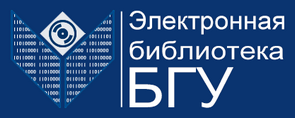Пожалуйста, используйте этот идентификатор, чтобы цитировать или ссылаться на этот документ:
https://elib.bsu.by/handle/123456789/259625| Заглавие документа: | Search for a heavy resonance decaying into a Z boson and a vector boson in the νν¯ q q ¯ final state |
| Авторы: | Chekhovsky, V. Mossolov, V. Gonzalez, Suarez J. CMS Collaboration |
| Тема: | ЭБ БГУ::ЕСТЕСТВЕННЫЕ И ТОЧНЫЕ НАУКИ::Физика |
| Дата публикации: | 2018 |
| Издатель: | Springer Verlag |
| Библиографическое описание источника: | J High Energy Phys 2018;2018(7). |
| Аннотация: | A search is presented for a heavy resonance decaying into either a pair of Z bosons or a Z boson and a W boson (ZZ or WZ), with a Z boson decaying into a pair of neutrinos and the other boson decaying hadronically into two collimated quarks that are reconstructed as a highly energetic large-cone jet. The search is performed using the data collected with the CMS detector at the CERN LHC during 2016 in proton-proton collisions at a center-of-mass energy of 13 TeV, corresponding to a total integrated luminosity of 35.9 fb−1. No excess is observed in data with regard to background expectations. Results are interpreted in scenarios of physics beyond the standard model. Limits at 95% confidence level on production cross sections are set at 0.9 fb (63 fb) for spin-1 W′ bosons, included in the heavy vector triplet model, with mass 4.0 TeV (1.0 TeV), and at 0.5 fb (40 fb) for spin-2 bulk gravitons with mass 4.0 TeV (1.0 TeV). Lower limits are set on the masses of W′ bosons in the context of two versions of the heavy vector triplet model of 3.1TeV and 3.4 TeV, respectively. |
| URI документа: | https://elib.bsu.by/handle/123456789/259625 |
| DOI документа: | 10.1007/JHEP07(2018)075 |
| Scopus идентификатор документа: | 85049954918 |
| Финансовая поддержка: | CERN accelerator departments for the excellent performance of the LHC and thank the technical and administrative staffs at CERN and at other CMS institutes for their contributions to the success of the CMS effort. In addition, we gratefully acknowledge the computing centers and personnel of the Worldwide LHC Computing Grid for delivering so effectively the computing infrastructure essential to our analyses. Finally, we acknowledge the enduring support for the construction and operation of the LHC and the CMS detector provided by the following funding agencies: BMWFW and FWF (Austria); FNRS and FWO (Belgium); CNPq, CAPES, FAPERJ, and FAPESP (Brazil); MES (Bulgaria); CERN; CAS, MoST, and NSFC (China); COL-CIENCIAS (Colombia); MSES and CSF (Croatia); RPF (Cyprus); SENESCYT (Ecuador); MoER, ERC IUT, and ERDF (Estonia); Academy of Finland, MEC, and HIP (Finland); CEA and CNRS/IN2P3 (France); BMBF, DFG, and HGF (Germany); GSRT (Greece); NKFIA (Hungary); DAE and DST (India); IPM (Iran); SFI (Ireland); INFN (Italy); MSIP and NRF (Republic of Korea); LAS (Lithuania); MOE and UM (Malaysia); BUAP, CINVESTAV, CONACYT, LNS, SEP, and UASLP-FAI (Mexico); MBIE (New Zealand); PAEC (Pakistan); MSHE and NSC (Poland); FCT (Portugal); JINR (Dubna); MON, RosAtom, RAS, RFBR and RAEP (Russia); MESTD (Serbia); SEIDI, CPAN, PCTI and FEDER (Spain); Swiss Funding Agencies (Switzerland); MST (Taipei); ThEPCen-ter, IPST, STAR, and NSTDA (Thailand); TUBITAK and TAEK (Turkey); NASU and SFFR (Ukraine); STFC (United Kingdom); DOE and NSF (U.S.A.). |
| Располагается в коллекциях: | Статьи НИУ «Институт ядерных проблем» |
Полный текст документа:
| Файл | Описание | Размер | Формат | |
|---|---|---|---|---|
| статья.pdf | 621,85 kB | Adobe PDF | Открыть |
Все документы в Электронной библиотеке защищены авторским правом, все права сохранены.

